#boto hourglass
Explore tagged Tumblr posts
Text
finished watching boto, this is my current mood


#brawl of the objects#boto boombox#boto party hat#boto hourglass#here take me low quality memes#i guess the first one is sorta an object show affirmation
8 notes
·
View notes
Text

Dolphins!
We've got Stella the Atlantic Spotted Dolphin, Cross the Hourglass Dolphin, Boto the Amazon River Dolphin, and currently unnamed shortbeaked dolphin~
7 notes
·
View notes
Text
Dolphin Classes
(Oceanic and river dolphins)
Fighter: Rough-Toothed Dolphin
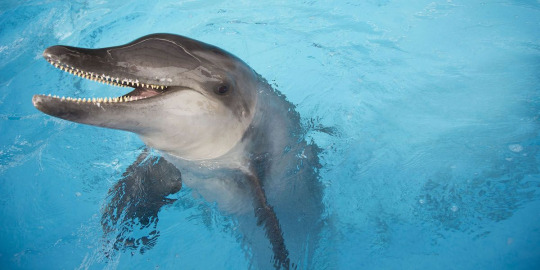
Barbarian: Orca
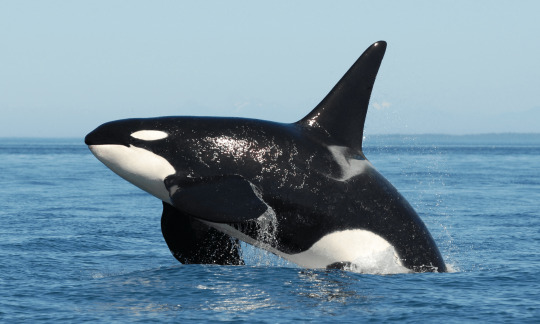
Paladin: Long-Finned Pilot Whale
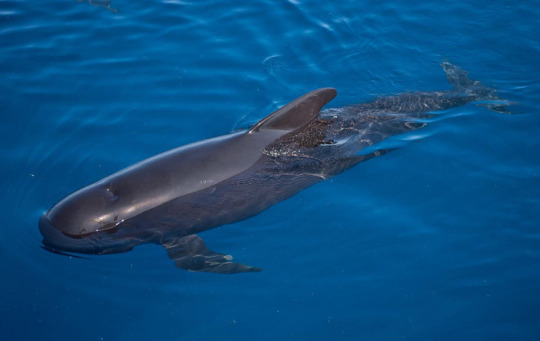
Rogue: Pygmy Killer Whale
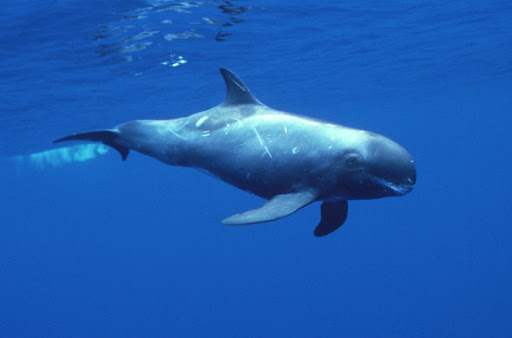
Ranger: Northern Right Whale Dolphin

Bard: Spinner Dolphin
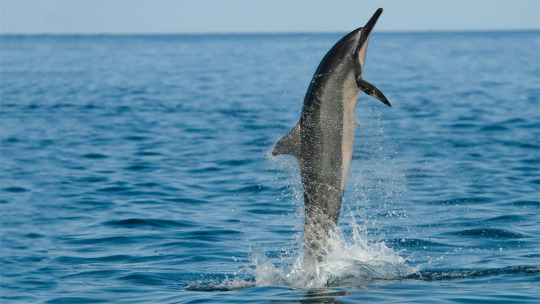
Wizard: Common Bottlenose Dolphin
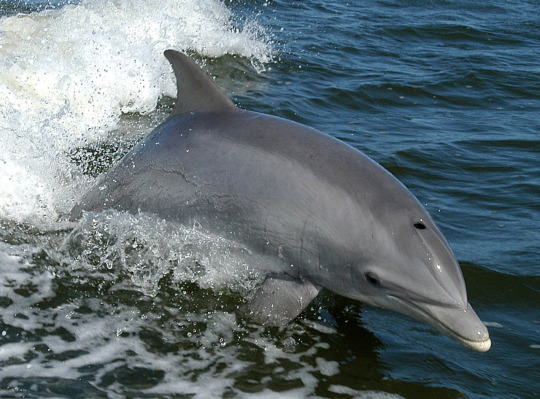
Sorcerer: Hourglass Dolphin

Warlock: Dusky Dolphin

Cleric: Ganges River Dolphin

Monk: Risso’s Dolphin/Monk Dolphin

Druid: Amazon River Dolphin/Boto

49 notes
·
View notes
Text
Road Trip to the New Bedford Whaling Museum
Interactive Learning Opportunity that Incorporates Science, History, Art and Culture.
Our family thoroughly enjoyed an afternoon at the New Bedford Whaling Museum and were ecstatic that they provided us with complimentary admission to the museum. We had driven past the museum signs during our annual trips to Martha’s Vineyard and giving that my husband’s family is of Cape Verdean decent, I had this museum on our family bucket list for years. Well, we finally made it and it more than exceeded our expectations.
Our time in New Bedford started with lunch at The Moby Dick Brewing Co., which is located one block from the New Bedford Whaling Museum. The service was prompt and they had a kid’s coloring sheet and kid’s menus which allowed for us to have a relaxing experience.


The meal came with an option of fruit which is great for kids like mine who don’t like potatoes.

You can still see the oil on the skeleton of the blue whale which is hanging in the main exhibit area. Check out the picture below for an image of the flask that is slowing collecting the oil that is dripping from the skeleton. Can you say way cool?



Sperm whale skeleton.

Reading about the history of whaling as they looked for their eye spy items.


Pre Visit Resources that will Compliment your Experience.
The Discovery Center offers a really cool opportunity for hands on learning and you won’t want to miss it during your visit with children.
The family guide to the New Bedford Whaling Museum is a great resource for families.
The museum offers this educational pre and post visit activities. My kids got a lot of the activities and they were a great compliment to the time spent at the museum.
Check out this video in preparation for your visit. Your kids will be enthusiastic about the trip.




Whaling Museum Admission
Members
FREE
Adult
$17
Senior (65+)
$15
Students (19+)
$10
Child & Youth
$7
Children aged 3 and under are FREE
Tickets include admission to the Mariners’ Home.
Suggested Reading List for Teachers, Grades K-8 -, From the museum website and added here for easy access.
Grades K-3
Loud Emily by Alexis O’Neill From School Library Journal “PreSchool-Grade 2 – Set in a 19th-century New England whaling town, this picture book champions the cause of loud children and the resourcefulness of little girls. When Emily is born, her booming “GOO GOO BA BA” startles the midwife and frightens away the birds. As she grows older, she grows louder. Rather than be carted off to Miss Meekmeister’s School for Soft-Spoken Girls, Emily gets herself a job calling orders on a whaling ship. This is just the place for the boisterous child, and she blasts commands to the crew and even saves the ship during a storm. In the satisfying conclusion, Emily returns to live with her family, but this time in a lighthouse where she warns passing vessels of dangerous rocks. “And nobody there in that house by the sea ever complains of the noise.” The oil paintings are styled after 19th-century folk art and successfully pull the story together. Much of the text is set against embroidery cloth, giving the book a charming, homespun look. The endpapers provide the words for several sea chanteys, along with scrimshaw-style illustrations that show Emily, her mouth open wide, hard at work with the sailors. A rollicking tale with a likable heroine that attests to the irrepressible nature of children.” –Christy Norris Blanchette, Valley Cottage Library, NY Copyright 1998 Reed Business Information, Inc. –This text refers to an out of print or unavailable edition of this title.
Peggony-Po by Andrea Davis Pinkney From School Library Journal “Kindergarten-Grade 4–Told with humor and verve, this rollicking tall tale is about a wooden boy named Peggony-Po who promises to catch the monster whale that bit off his daddy’s leg: after all, he caught his first whale when he was only four years old. When he goes off to capture Cetus, he eschews having a boat: a masterful illustration shows him riding a wave as he chases the whale, who ingeniously exudes attitude. Cetus rams through a school of fish, so Peggony-Po did underwater cartwheels to keep those fish from crying. He never slowed down. As Peggony-Po rides Cetus from tropical waters to icy coasts, he crows, What a way to see the world! Richly descriptive similes–as feisty as a kettle of just-caught fish and Like a pressing iron flattening a shirtsleeve–and phrases such as He [Cetus] loved to smash boats with a single slam of his tail convey dynamically both the absurdity and thrilling adventure of this story, and the illustrations brim with activity and energy. Peggony-Po dances a jig from the lookout mast, he becomes alive and starts talking to his father as he is sculpted, and Cetus blows boats into the sky and rails off a fence. Every library will want to buy at least one copy of this exuberant story that begins with a whale, ends with a whale, and has a whole lot of whale in its middle.” –Kirsten Cutler, Sonoma Library, CA Copyright © Reed Business Information, a division of Reed Elsevier Inc. All rights reserved.
Baby Whales Drink Milk by Barbara Juster Esbensen From School Library Journal “PreSchool-K-This series entry discusses the ways whales differ from fish, resemble humans, and the features that make them unique creatures of the sea. Using a picture-book format with rather clunky paintings, the simple text introduces children to the common aspects of all warm-blooded mammals. Esbensen focuses on the humpback whale and compares it to cats, dogs, horses, pigs, and humans to establish their commonalities. The humpback life cycle is described and illustrated, a cut-away drawing of a museum display shows a glimpse of blubber and internal organs, and a world map shows where these mammals live in winter and summer. A few other species are mentioned, and contacts for whale-watching tours are listed.” –Frances E. Millhouser, Reston Regional Library, VA Copyright 1994 Reed Business Information, Inc.
A Whale of a Tale! by Bonnie Worth “Onboard a vessel that would make Jacques Cousteau green with envy, the Cat and Co. take to the high seas in search of whales, dolphins, and porpoises—those aquatic mammals known as cetaceans. While learning how cetaceans stay warm without hair, have teeth or baleen, swim in troops, spyhop, spin, breach, and see via ecolocation, kids are introduced to almost 20 different species—including sperm, right, humpback, and blue whales; Gulf, spectacled, and finless porpoise; and boto, common, hourglass, and bottlenose dolphins. A shipshape selection for summer reading!”
“The Cat in the Hat’s Learning Library shows young readers that books can be entertaining and educational at the same time. This is a wonderful series!” —Barbara Kiefer, Ph.D., Charlotte S. Huck Professor of Children’s Literature, Ohio State University
The Snow Whale by Caroline Pitcher “One frosty morning when the hills are humpbacked with snow, Laurie and Leo decide to build a snow whale. As they shovel and dig and pat and polish to bring it out of the hill, the whale graudally takes on a life of its own. Caroline Pitcher is the author of The Sue Tribe and On the Wire.”
Who’s in the Sea? by Charles Reasoner “A humorous and informative text is presented in a question-and-answer format, posing such brain ticklers as “Who has a long nose and jumps high above the waves?” and hiding the surprise answers behind sliding panels.”
Sydney and the Whalebird by David Elliot “Sydney’s latest invention has caused Bill the whale to get stuck in a large hole on the beach. The other animals try to rescue him but nothing seems to work until Sydney has an idea!Sydney builds a hot air balloon that he attaches to Bill. Bill then blows the balloon full of air and Sydney, Bill and the balloon shoot up high into the air. Alas – too high! But Sydney comes to the rescue yet again and the whalebird finally crashes – safely – into the sea. SYDNEY AND THE WHALEBIRD is similar to SYDNEY AND THE SEA MONSTER in its inventiveness and creativity.”
Little Whale’s Song by Fran Evans “This story takes place on the ocean floor where Little Whale is so busy playing with the fish that he doesn’t notice his family swim away without him. When he tries to call out after them, he realises that he has forgotten how to sing! And so each page sees Little Whale encounter a different creature and ask that they teach him how to sing. But Little Whale cannot squeak like the Dolphin, hum like the Lobster or honk like the Seal and the Octopus and Turtle provide little inspiration either. It is only when he meets the wise old Manatee that he is advised to listen to his own voice and make a sound all of his own. It is with this fable- like ending that sad Little Whale lets out a loud sing-song sigh that brings his family swimming back for a joyous reunion. A delicate, if rather unoriginal story, which is likely to appeal to small children and would be a good choice for reading aloud given the use of the animal sounds throughout.” –Rachel Burke, Inis #5
The Snail and the Whale by Julia Donaldson From School Library Journal “PreSchool-Grade 3–A tiny mollusk that longs to see the world hitches a ride aboard a humpback whale in this charming picture book. After seeing far-off islands, underwater caves, and storm-filled skies, the snail feels impossibly small–until the whale is beached in a harbor, and she saves the day by writing a note on the blackboard of a nearby school to summon help. The message that even the smallest among us can help others will not be lost on children, and neither will the poetic language: “A humpback whale, immensely long,/Who sang to the snail a wonderful song/Of shimmering ice and coral caves/And shooting stars and enormous waves.” Donaldson’s smooth, sprightly rhyming scheme buoys the story and never falters. The flat, cartoonish look of Scheffler’s multimedia illustrations perfectly complements the tone of the text. The rollicking language and bright pictures make this a great choice for reading aloud.” –Kathleen Kelly MacMillan, Maryland School for the Deaf, Columbia Copyright © Reed Business Information, a division of Reed Elsevier Inc. All rights reserved. This text refers to an out of print or unavailable edition of this title.
*Arthur Bennett, who portrays Abraham Lincoln at the Whaling Museum’s annual Presidents’ Day Birthday Bash, enjoys reading this book every year at the event for its imagery, rhymes, and message of cooperation and the idea that even the smallest person can make the biggest difference.
Peg and the Whale by Kenneth Oppel From School Library Journal ”Kindergarten-Grade 3-Peg was born on her parents’ fishing boat and grew up hauling sheets, pulling lines, and gutting fish. Now that she is almost seven and has already caught just about everything that lives in the sea, she decides to set her sights a bit higher and signs onto a whaling ship. A few days later, she hooks her prey, but the jealous first mate cuts the rope holding her to the mast and she is taken for a ride by the angry creature. Peg is never fazed, however, and as she flies through the air behind the huge animal, she thinks, “Just as well-That old ship was only slowing me down.” The whale swallows her whole and Peg makes herself at home in its stomach, using driftwood to build a ladder to its blowhole. When she finally returns home, she is ready for a new kind of challenge-mountain climbing. This outrageous story never misses a beat, and the feisty, redheaded Peg is in a league with other modern tall-tale heroines such as Anne Isaacs’s Swamp Angel (Dutton, 1994) and the star of Diane Stanley’s Saving Sweetness (Putnam, 1996). Done in acrylic on paper, Widener’s paintings have a bright quality and bits of exaggerated humor that suit the larger-than-life tale. A whale of an adventure story with a thoroughly likable heroine.” –Kathleen Kelly MacMillan, Carroll County Public Library, Eldersburg, MD Copyright 2000 Reed Business Information, Inc.
Rainbow Fish and the Big Blue Whale by Marcus Pfister From School Library Journal “PreSchool-Grade 1–The winsome and sensible fish who stole preschoolers’ hearts in Rainbow Fish (1992) and Rainbow Fish to the Rescue (1995, both North-South) has returned. In this story, Rainbow Fish and his friends must share their food and their space with a gentle old whale who comes to their reef. The fish with the jagged scales complains that the blue whale is watching them, and soon everyone views the large mammal as an enemy. After a skirmish in which the whale scares all of the little fish into a cave, Rainbow Fish realizes that it is up to him to approach the larger animal and make peace. A heart-to-heart talk between the two reveals that the whale watched the fish only because he admired their beauty. Indeed, the holographic silver foil applied to the fins and scales of these expressive and colorfully illustrated fish is eye-catching. The glittering watercolor artwork of this book has the same child appeal of its popular predecessors. However, the story is thin, possessing more adjectives than action. Its moral theme of tolerance and communication, while admirable, can be found in at least a dozen better books. This one is for those already enamored of Rainbow Fish. It is not likely to win new fans.” –Jackie Hechtkopf, Talent House School, Fairfax, VA Copyright 1998 Reed Business Information, Inc.
A Garden of Whales by Maggie Steincrohn Davis
“Last night in my tub, in my tub while I scrubbed, I dreamed that I lived in the sea with the Whales. Magnificent Whales. Mysterious Whales. Mystical, Musical, Mountainous Whales.
The narrator of this tale is a boy who knows that whales are magnificent but endangered creatures. He wants to do anything he can to save them, and as he scrubs in his bathtub, he dreams up a plan to save the whales. Children from all over the world also get in their bathtubs to save the whales, planting a garden of whales. He knows this is a fantasy, but the dreams of children are the roots of action.”
Big Blue Whale by Nicola Davies “This is a terrific, fact-filled book that teachers young students about a blue whale: it’s diet, general anatomy, migration, size compared to other animals, and more. The text is detailed and easy to understand, and the illustrations are very helpful when explaining any physical or behavioral feature of the whale. We use this book often in our programs.
‘Reach out and touch the blue whale’s skin. It’s springy and smooth like a hard-boiled egg, and it’s as slippery as wet soap. Look into its eye. It’s as big as a teacup and as dark as the deep sea. Just behind the eye is a hole as small as the end of a pencil. The hole is one of the blue whale’s ears – sticking-out ears would get in the way when the whale is swimming.'”
-Brian Witkowski, New Bedford Whaling Museum
A Little Whale Tale by Sam McKendry “Hardcover book with a 6×6 inch water-filled pouch on cover with movable fish and sand. This undersea tale about a whale who becomes lost and then, happily, finds his way home, introduces young readers to the colorful creatures who live in the ocean. Richly illustrated and written in rhyming verse, you’ll find this required bedtime reading on a nightly basis!”
Dear Mr. Blueberry by Simon James From School Library Journal “PreSchool–Grade 1 – It is summer, and Emily discovers that a whale is living in the pond in her yard. Eager to learn more about this amazing animal, she writes a series of letters to her teacher, Mr. Blueberry, asking for information about whales and their habits. The humor of the situation lies in Mr. Blueberry’s replies. He sends Emily some details, but he is also quite adamant that whatever is in her pond is not a whale since they live in salt water. Nevertheless, both Emily and readers know that indeed there is a whale in the pond, and the proof is the amusing, full-page watercolor cartoons. Emily shares her letters with the whale, who, after hearing about his species’ migratory habits, leaves the pond to return to the ocean. (How he does this is not explained.) At first, Emily is saddened at her loss, but a chance meeting with Arthur on the beach gives her the opportunity to say goodbye. This story is a nice blend of fantasy and reality with a smattering of facts. The large print and simple vocabulary make it appropriate for beginning readers.” –Laura Culberg, Harold Washington Library Center, Chicago Copyright 1991 Reed Business Information, Inc.
Freddi Fish a Whale of a Tale by Scott Nickel Wally the Whale is stuck on the beach, and boy can he blubber! Freddi and her friends must pull together to rescue their friend and get him back in the water.
Amos & Boris by William Steig “Amos the mouse and Boris the whale: a devoted pair of friends with nothing at all in common, except good hearts and a willingness to help their fellow mammal. They meet after Amos sets out to sail the sea and finds himself in extreme need of rescue. And there will come a day, long after Boris has gone back to a life at sea and Amos has gone back to life on dry land, when the tiny mouse must find a way to rescue the great whale.”
Amos & Boris is a 1971 New York Times Book Review Best Illustrated Book of the Year, Notable Children’s Book of the Year, and Outstanding Book of the Year.
TOP
Grades 3-5
Moby Dick by Allan Drummond Grades 2-4–“In this full-color picture-book adaptation of the classic, Allan Drummond pays homage to one of the greatest sea stories ever told. Staying as true to Herman Melville’s language as possible, and taking Ishmael as his narrator, Drummond tells of the adventure of Captain Ahab’s relentless quest for revenge.”
Tangled in the Bay by Deborah Tobin “Based on a true experience, this is the story of a right whale, Clio, and her newborn calf, Pasha, who arrive during the short northern summer, in the rich, cold waters of the Bay of Fundy to feed and replace stores of fat. With fewer than 350 North Atlantic right whales in existence, mother and baby whale are being tracked by a research team studying their habitat and inter-relationships. While monitoring whales on a routine fly-over, a researcher notices one whale tangled in some fishing gear. Baby Pasha is trapped in nets! Quickly, an international team of researchers and conservationists comes together to try and disentangle the animal and save its life. This wonderful story is beautifully illustrated by Jeffrey C. Domm who has illustrated a number of bestselling books.”
You wouldn’t want to sail on a 19th century Whaling Ship! by Peter Cook “Fits in well with social studies and U.S. history curricula. – Draws in even the most reluctant reader with a lighthearted tone and hilarious illustrations. – Includes glossary and index. – Excellent tie-in to literature, as the tale of the Essex inspired Herman Melville’s classic book, Moby Dick. National Social Studies Education Standards: Grades K-4 II. Time, Continuity, and Change – Accounts of past events, people, places, and situations contribute to our understanding of the past I. Culture – People, societies, and cultures address needs and concerns in ways that are both similar and different.
The Scrimshaw Ring by William Jaspersohn From School Library Journal “Grade 2-5 – On a coastal farm in Newport, RI, in 1710, William’s days are filled with a great deal of idyllic play and very little work. However, one fateful day, his parents leave him in the care of the family cook and his “peaceable kingdom” is disturbed by the arrival of a ship manned by “rough, wild, fearsome men with filthy hair, faded clothes, curved pistols and sharp cutlasses.” Deserted by the terrified cook, William witnesses the murder of the ship’s captain and the theft of his parents’ livestock. Finally, he is discovered by a member of the crew who “did something remarkable.” Instead of harming the boy, the murderous mutineer removes a ring from his finger and places it in the boy’s hand. William’s parents return to find him safe but frightened and amazed by the afternoon’s events. He learns that “The world is a beautiful place,” “But, in truth, sometimes it is dangerous.” Oil paintings clearly tell the tale, but the characters’ facial features are often indistinct or exaggerated. Notes indicate that this account is based on a true story and discuss the significance of family heirlooms. Suggestions encourage readers to seek their own family stories and treasured objects. A utilitarian addition for most collections.” –Alicia Eames, New York City Public Schools Copyright 2002 Reed Business Information, Inc.
Grades 6-8
Revenge of the Whale: The True Story of the Whaleship Essex by Nathaniel Philbrick From scholastic.com – On November 20, 1820, the whaleship “Essex” was rammed and sunk by an angry whale. Within minutes, the twenty-one-man crew, including the fourteen-year-old cabin boy Thomas Nickerson, found themselves stranded in three leaky boats in the middle of the Pacific Ocean with barely any supplies and little hope. Three months later, two of the boats were rescued 4,500 miles away, off the coast of South America. Of the twenty-one castaways, only eight survived, including young Thomas. Based on his “New York Times” best-seller “In the Heart of the Sea,” Nathaniel Philbrick recreates the amazing events of the ill-fated “Essex” through the sailors’ own first-hand accounts, photos, maps, and artwork, and tells the tale of one of the great true-life adventure stories.
Ship of Fire by Michael Cadnum From Booklist – “Gr. 6-8. In a tale that will make readers truly appreciate the state of modern medicine, a teenage apprentice surgeon sails with Sir Francis Drake on a pre-Spanish Armada strike against Spanish shipping at Cadiz. Fresh from a bear-baiting, Thomas Spyre and his learned master William Perrivale suddenly find themselves hustled aboard the Elizabeth Bonaventure, Drake’s flagship, to replace a surgeon stricken with syphilis. Though well versed in the latest medical techniques, from anesthesiology (a mallet to the head) to bloodletting by leech or lancet, Thomas feels at sea in more ways than one after Perrivale is killed by an exploding cannon. Still, he rises to the occasion, and after broadsides, melees, and a nearly disastrous brush with a blazing ship, he survives his greatest test–his first major amputation. Thomas’ narrative cuts off (so to speak) rather abruptly, but Cadnum still adds to his reputation for rousing historical adventures set against gruesomely naturalistic backdrops.” –John Peters Copyright © American Library Association. All rights reserved
Black Hands, White Sails by Patricia C. McKissack From Library Journal Grade 6-9-A well-researched and detailed book chronicling the contributions of African Americans to the whaling industry. Many were drawn to jobs on whaling ships throughout the 1600-1800s, for while conditions were difficult, they were preferable to slavery. The authors go to great lengths to draw out the roles of African Americans, and while many of these connections are eye-opening, they are sometimes tenuous. The first half of the book, an introduction to the whales and the business surrounding their hunting, features significant men such as Prince Boston and Paul Cuffe, but also some who were less directly involved. Frederick Douglass did briefly work as a ship’s caulker but many pages are devoted to describing aspects of his life that are irrelevant to whaling. Midway, the emphasis shifts to interesting aspects of life aboard ship, explaining phrases we use today that derive from whalers, superstitions of the seas, sailing songs and shanties, the story of the famous Essex, and the role of whalers in the Revolutionary and Civil Wars. While the story becomes much more engaging at this point, the role of African Americans seems to have diminished importance as race is only occasionally mentioned. Overall, though, as an important and under-explored aspect of both African-American and nautical history, this book merits a place on the shelves in larger libraries and in African-American collections. However, for a more fascinating look at whaling, and one that integrates the African-American story along with the many other participants, look to Jim Murphy’s Gone A-Whaling (Clarion, 1998). –Andrew Medlar, Chicago Public Library, IL Copyright 1999 Reed Business Information, Inc.
The Whale People by Roderick Langmere Haig-Brown “Beloved BC author Roderick Haig-Brown was at the height of his creative powers when he crafted this coming-of-age story set in an aboriginal whaling village on the West Coast. In The Whale People, young Atlin must one day succeed his father Nit-gass, a great whaling chief of the Hotsath people. The boy trains for his role with the mixture of yearning and apprehension experienced by every youth racing toward adulthood – except that in Atlin’s case, his whole community is depending on his success. With lean, sure-footed prose, Haig-Brown captures the tangled emotions of adolescence, and in the process conveys a vivid portrait of pre-Columbian life on the West Coast. Never preachy or condescending, The Whale People is richly furnished with the material and spiritual mainstays of its characters: canoes, harpoons, animals and “tumanos,” the personal magic a great whaler and leader must possess. “Timeless” is a term too freely bandied about, but seldom has a story so deftly married the moment with the millennia. Written 40 years ago – it was named Book of the Year for Children by the Canadian Library Association in 1964 – it could be set 400 years ago, yet there is not one quaint or dated sentence in it.”
The Young Man and the Sea by Rodman Philbrick From School Library Journal “Grade 5-8 – A 12-year-old protagonist replaces Ernest Hemingway’s elderly Santiago in this takeoff on the classic novelette, set this time in coastal Maine. Skiff has lost his mother and, since her death, his father, once a hardworking fisherman locally known for his skills with a harpoon, has sunken into such deep, beer-soaked despair that his son can’t seem to rouse him off the couch. As Skiff tries to single-handedly stem the rising tide of slovenly decay threatening to swamp what’s left of his family, he also must contend with Tyler Croft, a bullying rich kid who sabotages his efforts to get ahead. Things seem entirely hopeless until the day he sees a giant tuna hauled in from offshore and sold for a large sum as a source for premium sushi. The fish literally and symbolically embodies all of Skiff’s ambitions for a better life, and he decides to try to catch one using just a 10-foot plywood boat and a harpoon created by his father. As in The Old Man and the Sea, the ensuing adventure is told through an inner dialogue, one in which Skiff sometimes imagines he is speaking to his mother. This excellent maritime bildungsroman has all of the makings of a juvenile classic: wide-open adventure, heart-pounding suspense, and just the right amount of tear-jerking pathos, all neatly wrapped up in an ending that–unlike its namesake’s–is purely triumphant. A great read-aloud, a natural for classroom use, and a must-have for all collections.” –Jeffrey Hastings, Highlander Way Middle School, Howell, MI Copyright © Reed Business Information, a division of Reed Elsevier Inc. All rights reserved. –This text refers to an out of print or unavailable edition of this title.
Whalesinger by Welwyn Wilton Katz From School Library Journal “Grade 8 Up – In a sturdy framework of the ecology and geology of Point Reyes and Drake’s Bay, Katz threads an intricate warp that features a group of scientists engaged in research, a historical occurrence on Drake’s ship, the migration pattern of the gray whale, and an impending earthquake and accompanying tsunami. Over and under this she weaves a complex pattern of science, personalities, a lost treasure, and a whale mother with an ailing baby. Nick, 17, is not yet over the death of his loved older brother. Marty, 16, has learning difficulties, but an innate empathy that appeals to Nick, and that allows her to communicate with the whale mother. Pembroke, the science-villain, seeks a treasure on a ship scuttled by Drake, indifferent to any ethical dilemmas involved. A lot goes on here, including a first-rate introduction to scientific methods. Clearly depicted are the strange behaviors often observed in animals just prior to a major earthquake, including the coupling of Nick and Marty (safe sex is practiced). Some readers might find Nick’s response to Marty’s confusion afterwards extremely simplistic (“. . . But with you . . . it was beautiful. . .”). Have we heard that line before? While strands of the plot go slightly awry, and the development of some of the characters is contrived, the book is substantial enough to keep readers going. The final apocalyptic scenes outweigh some of the more lurid ones of the sunken ship and its long-buried cargo. The major characters, although battered, come through alive, and perhaps more whole to face their future. Intriguing.” –Patricia Manning, Eastchester Public Library, NY Copyright 1991 Reed Business Information, Inc. –This text refers to an out of print or unavailable edition of this title.
This page contains affiliate links. See “Disclaimer” for more information regarding Amazon Affiliates program and my participation.
Follow me:
Facebook: https://www.facebook.com/havekiddoswilltravel/
Instagram: https://www.instagram.com/havekiddoswilltravel/
Twittter: https://twitter.com/Havekiddoswill
Pinterest: https://www.pinterest.com/RMFamily/travel-blog/
#havekiddoswilltravel#explore#adventure#travel#familytravel#newbedfordwhalingmuseum#sponsored#homeschool#homeschool resources#science#road trip#fieldtrip#booklist#black books#history#art#culture#cape verdean#whaling#moby dick#ma
0 notes